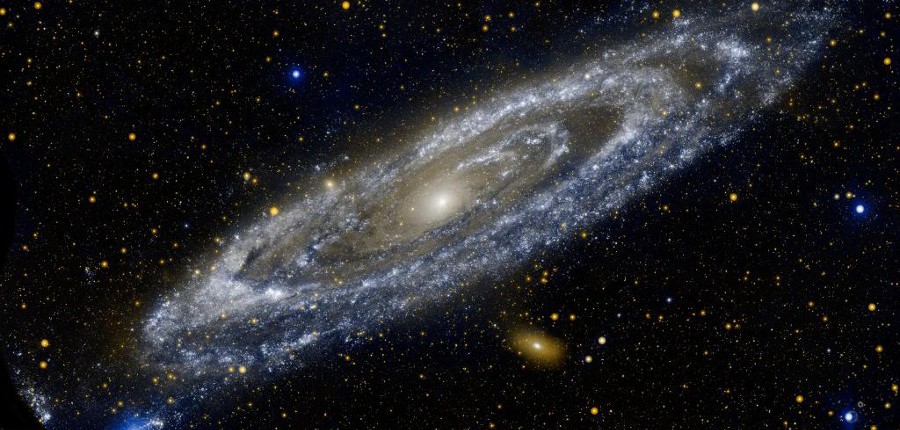(Correction appended 2020-06-21)
Comes before us then, the cosmologist duo of Luke A. Barnes and Geraint F. Lewis, a couple of Aussies, with a Universe they want to sell you. The pitch, as presented in this promo for their new book, is that the Big Bang explains certain observations that cannot be explained by any competing model and any competing model must explain them. The argument rests on three points that aren’t so much about observations, but in two cases are merely superficial claims to explaining things that are essentially self-explanatory in terms of known physics, without invoking the big bang. The third point rests on the unjustified contention that the big bang interpretation is the only acceptable, existing explanation for the cosmological redshift.
The three points discussed in the video and their fundamental weaknesses are:
Olber’s Paradox – Olber’s paradox is inherently resolved by the cosmological redshift and this resolution does not depend on the Big Bang assumption that the redshift is a consequence of some form of recessional velocity. The cosmological redshift exists and if the cosmos is of sufficient size there will be a distance beyond which light from a galaxy is redshifted to a null energy state or, more likely, will be reduced to a minimum state where it will pool with all other such distant sources to form a microwave “background” from the point of view of a local observer.
The Cosmological Redshift – That the redshift is caused by some form of recessional velocity, from which cosmologists reason backwards to the Big Bang event, is simply an assumption of the standard model. If the assumption is rather that what expands are the spherical wavefronts of light being emitted by galaxies, you get a picture that is consistent with observations and which can be treated with a standard General Relativity formalism to yield a cosmological redshift-distance relationship – no big bang, with its ludicrously inexplicable original condition, required.
Nucleosynthesis – The cosmic abundances of the elements are what they are. BB theorists have simply imported nuclear theory and fit it to their model. Model fitting is a technique as old as Ptolemy. As the linked article makes clear there are many possible pathways to nucleosynthesis. The BB version also doesn’t even work that well.
Don’t know much about dark matter and dark energy… Barnes and Lewis kind of joke about this, which is appropriate I guess, since according to the standard model, 95% of the model’s Universe is composed of this unobserved and, by their account, poorly understood stuff. Which brings us to one of the central conceits of the video and, presumably, the book it is promoting, which is that the standard model “explains” satisfactorily, all of our cosmological observations.
The problem with the standard model’s “explanations” for observed phenomena is precisely that they are not scientifically satisfactory. They are not satisfactory because “explanations” such as dark matter, and dark energy are not empirically resolvable. Dark matter and dark energy are necessary to the standard model, in order to fit the model to observations. Physical reality, however, has no use for either, in as much as, no evidence for their physical existence can be found beyond this urgent need to somehow fit the standard model to observations.
By invoking, as necessary components of physical reality, entities for which there is no observational evidence, modern cosmology has descended into a pre-Enlightenment medieval mind-set. Dark matter and dark energy are just the modern, secular version of angels and devils dancing on the head of a pin. Their scientific, “explanatory” power in nil.
The video also features such an egregious scientific error as to be almost breathtaking. At the 5:50 minute mark, in an attempt to justify their claim that only the expanding universe interpretation of redshift accounts for Olber’s Paradox, Barnes makes the completely fallacious argument that the more distant a luminous object is, its apparent size diminishes, but not its apparent brightness. That is simply wrong.
Even the most perfunctory treatment of light theory would include a discussion of the luminosity-distance relationship. That someone with a Phd (I presume in science), would choose to ignore basic scientific knowledge in order to advance a spurious claim about the explanatory power of the standard model, says all you need to know about the state of modern cosmology. It’s a mess.
Correction (2020-06-21): In a conversation with Louis Marmet over at A Cosmology Group, he pointed out that technically Barnes was correct; he was speaking of surface brightness, which does not change with distance for an extended object. Stars, however, are not resolvable as extended objects by the human eye, only by the largest telescopes. The apparent magnitude of point-like sources, such as stars varies according to the luminosity-distance relationship. Barnes’ argument remains false – on its own terms.
